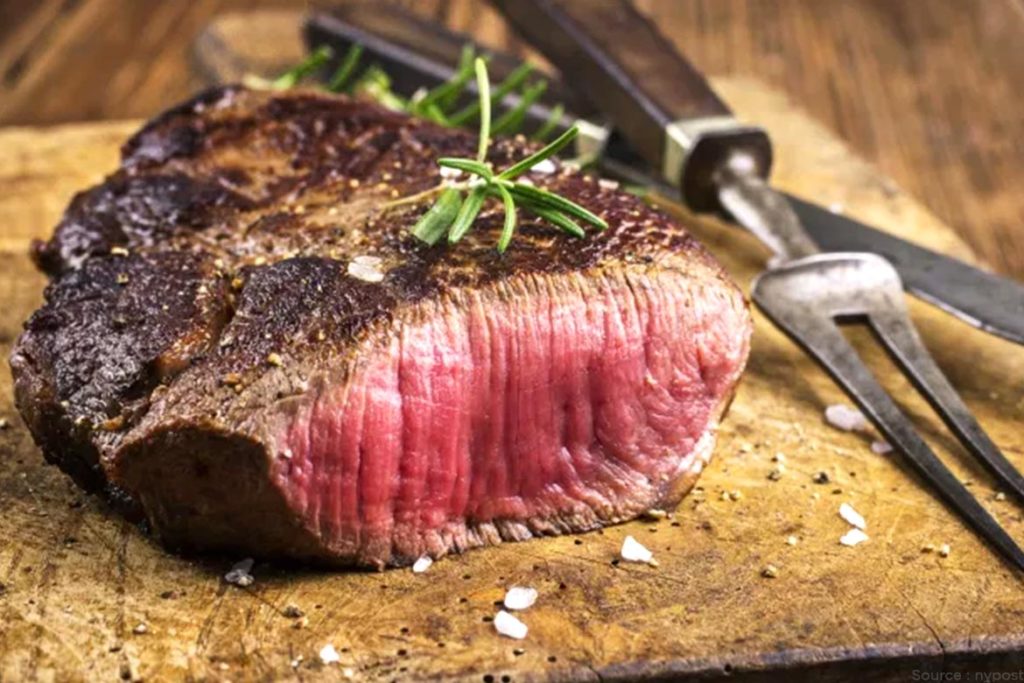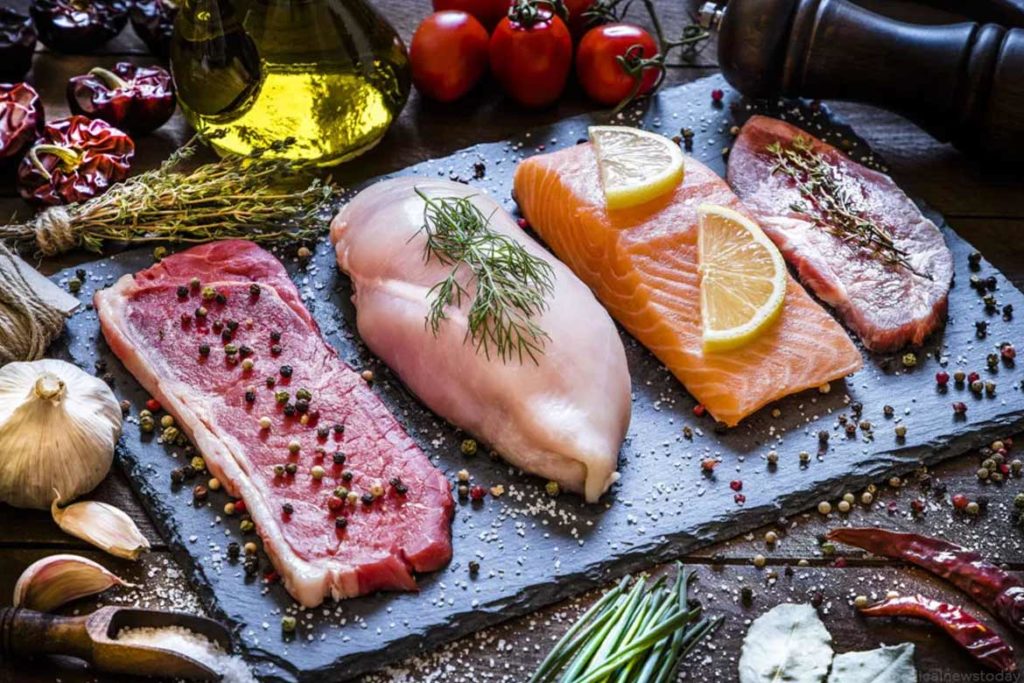Overview
Meat quality is defined by compositional quality. The compositional quality depends on the lean-to fat ratio. Also, palatability factors such as visual appearance, aroma, firmness, juiciness, tenderness, and flavor affect compositional quality. The nutritional quality of meat is objective. As perceived by consumers, “eating” quality is highly subjective.
Also Read:- Best Breakfast Before Gym For Weight Gain
- Palatability factors
Appearance
The appearance of meat is defined by its color, marbling, and water-holding capacity. Marbling has a beneficial effect on the meat juiciness and meat flavor. Meat should have a normal and uniform color.

Smell
The meet should have a normal smell. It will be different for each of the species such as beef, pork, chicken but should vary only slightly within the species. Avoid rancid or strange-smelling meat should be avoided.
Firmness
Meat should appear firm rather than soft or tough.
Juiciness
It depends on the amount of water retained in cooked meat. Juiciness enhances flavor and softens the meat. Hence, making it easier to chew. It stimulates saliva production in the mouth. Juiciness is determined by water retention and lipid content. Meat aging can enhance water retention. This in turn increases juiciness.
Also Read:- How Do I Avoid Heart Disease with Heredity
Tenderness
It has been linked to several factors, such as the animal’s age, sex, or the muscle location.

Flavor and Aroma
These are to create the sensation. The perceptions rely on the smell through the nose and on the sensations of salty, sweet, sour, and bitter on the tongue. Meat flavor and aroma is affected by the type of species, diet, cooking method as well as the technique of preservation.
- Meat consumption and its effect on heart
Red meat is derived from farm-reared mammals such as pork, ham, cuts from pigs, lamb, and beef. Red meat is a popular food amongst the followers of the paleo diet where food choices are guided by judging which foods would have been available to our ancient ancestors. Red meats have a high amount of saturated (bad) fat. Saturated and trans fats can raise blood cholesterol and cause heart diseases. A higher meat intake could increase your risk of heart and circulatory problems and early death, according to research. The research has found that a higher intake of processed meat or unprocessed red meat, was associated with an increased risk of coronary heart disease, stroke, heart failure, and circulatory disease. The researchers also found that a higher intake of processed meat or unprocessed red meat was associated with an increased risk of early death.
Eating two to three servings of processed meat every week is linked to an 8 percent higher risk of heart diseases and circulatory ailments. When it comes to unprocessed red meat, the risk of heart and circulatory diseases increases by 4 percent with every two large servings per week, and the risk of early death increases by 3 percent. These findings are based on the average increase in risk across thousands of people and can be difficult to apply directly to individuals.
Red meat includes beef, lamb, pork, veal and venison, and processed meat is classified as meat which has been modified by smoking, curing, adding salt or preservatives such as bacon, ham, sausages or salami. Several studies have established a link between consuming processed meat such as bacon, hot dogs, sausages, and an increased risk of cardiovascular disease (CVD) as well as death. Processed meat contains a higher amount of saturated fats along with a higher level of salt and preservatives. Newer research has suggested that even a low amount of these foods is enough to jeopardize health.

White meat is pale in an appearance before and after cooking. It is considered as a lean source of protein with lower fat content. A common example of white meat is the lighter-colored poultry meat (light meat), chicken, and turkey. Most people believe that consuming white meat is a healthier choice because it contains less saturated fat than dark meat, but a small study, published in The American Journal of Clinical Nutrition, suggests otherwise. White meat diet had elevated levels of cholesterol and other atherogenic lipoproteins known to contribute to heart diseases. An increase in LDL (or “bad”) cholesterol, which can clog the arteries and increase the risk of coronary heart disease and heart attacks. Those who consume the non-meat diet had much lower lipid levels. White meat causes an increase in blood cholesterol levels more than consuming equivalent levels of plant-based proteins. White meat is as harmful as red meat when it comes to heart disease risk.
Also Read:-Role Of Women In The Family!
Conclusion There is no harm in consuming meat as long as you limit the amount and choose healthier options. One portion of meat is two to three ounces or about 1/4th cup. Choose lean cuts of meat. Lean cuts contain the words “round,” “loin” or “sirloin” on the package. Clear off as much fat as you can before cooking. Also, remove the melted fat after cooking. Use healthier cooking methods such as baking, broiling, stewing, microwaving, stir-frying, and roasting. Clear off the fat after browning. Minimize consumption of processed red meats such as bacon, ham, salami, sausages, hot dogs, beef jerky, and deli slices. Always opt for cuts of meat with the least amount of visible fat. Chill meat juices after cooking to skim off the hardened fat. You can add the juices to stews, soups
